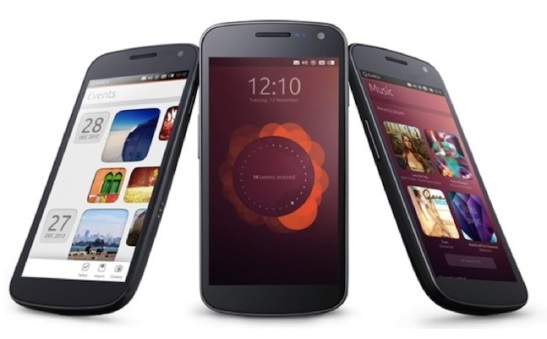I installed Ubuntu Touch on my Nexus 7 today
Having got my Nokia Lumia 920 back from Nokia in what appears to be a working state I thought it might be a good idea to have a look at Ubuntus new mobile interface. The Nexus 4 is the reference platform for the new phone OS and as I now have one of these I thought lets give it a go..
Remembering this is not a production release, it is still a test version, and accepting that some things just wouldn’t work I wasn’t so much looking to see this from a technical point of view, more just seeing what this is all about. The general concept of this phone OS.
Install
The instructions on the Ubuntu Wiki for the nexus 4 are really simple, I followed them and it took about 5 minutes to unlock the phone, and get the OS onto the device. It’s not a huge leap of faith to think that there will be a GUI for doing what takes a few simple commands when the software goes production.
The basic install is to install a few packages on Ubuntu, unlock the phone, put it into developer mode, enable USB debugging, and install the software. It’s very clearly outlined and the phone provides good feedback as to what is happening.
Interface
When the phone boots up into the Ubuntu Touch OS a side swip opens you into the interface. It’s crisp on the Nexus 4 and its immediately obvious this OS is button free, by which I mean the back button on the Android device is non existent.
The interface is all about swiping, swiping from right to left will swap between the home, apps, music and other screens, swiping from left to right brings in the familiar (to Ubuntu users) Unity bar with apps, swiping up will if available bring a back button. Swiping down is interesting, there is a task bar at the top of the screen, depending where you swipe down, you will get a config screen for the task bar icon, so if you swipe down over the volume indicator, you will get the sounds settings, however swipe down over the wifi indicator and you get a different screen.
I think it is safe to say it did take a few minutes to grasp the concept of what was going on here, this is very different, in a good way, to what you might be used to on IOS or Android. However once it clicks its perfectly usable.
The icon sizes are nice, however being pre release software there are a lot of placeholders so some things just don’t work. As well as icons for pressing for functionality there are placeholders which indicate the availability of Unity dash like media which is interesting.
The screen which shows running apps is really good, and closing the running apps is quick and easy and seems to actually show the running app in real time.
The settings interface, again many placeholders has a slightly different look and feel from the rest of the interface, it’s not out of place, however it is obvious with the flat two tone icons that you are in a different area, this might be design, this might be because its not finished, not sure however there seem to be placeholders for a lot of options.
Making a call
This is a phone, not a computer, isn’t it? And making a call is what phones do, so I pressed the phone button, and was able to make a call, it was clear, I could hear the other person, they could hear me, they couldn’t hear it was an Ubuntu Phone 🙂 however this does work.
Data
From a data perspective I was able to see and connect to Wifi networks, but couldn’t setup the 3G on the phone as the setting seemed to be a placeholder. Connectivity was good, I got the same strength I would on Android which provided quick access on the phone to the Internet apps like Facebook and Google mail which default as you might expect to the mobile interfaces for these apps.
Apps
As I would expect there are only a splattering of native apps this will change over time as the industry gets behind the phone, using the web apps for things like Facebook is quick and feels very native on the phone, this is nice and being a ChromeOS user I tend to do this a lot anyway.
Getting Android back
This is not something I could use every day right now, thankfully the same page which gets Ubuntu on the phone helps put Android back on, and again the instructions are clear and concise and again, I’m pretty sure a simple GUI could be used to do this. Basically you download the android OS image and put the phone into a mode to accept the image, and then run a shell script on the PC which flashes the image back on the phone.. Easy
Thoughts
I like this OS, it’s showing potential, and Mark Shuttleworths vision is obvious here. I love that at least one Linus Distro realises the desktop is dead and I’m glad it s canonical. Vision and focus is what is needed here not the arguments of the community.
Once you release the smartphone muscle memory which Android has gripped on you, the interface works well and is very clear and usable.
As soon as this is release ready I’m migrating the nexus over to it and will use as my mobile.

